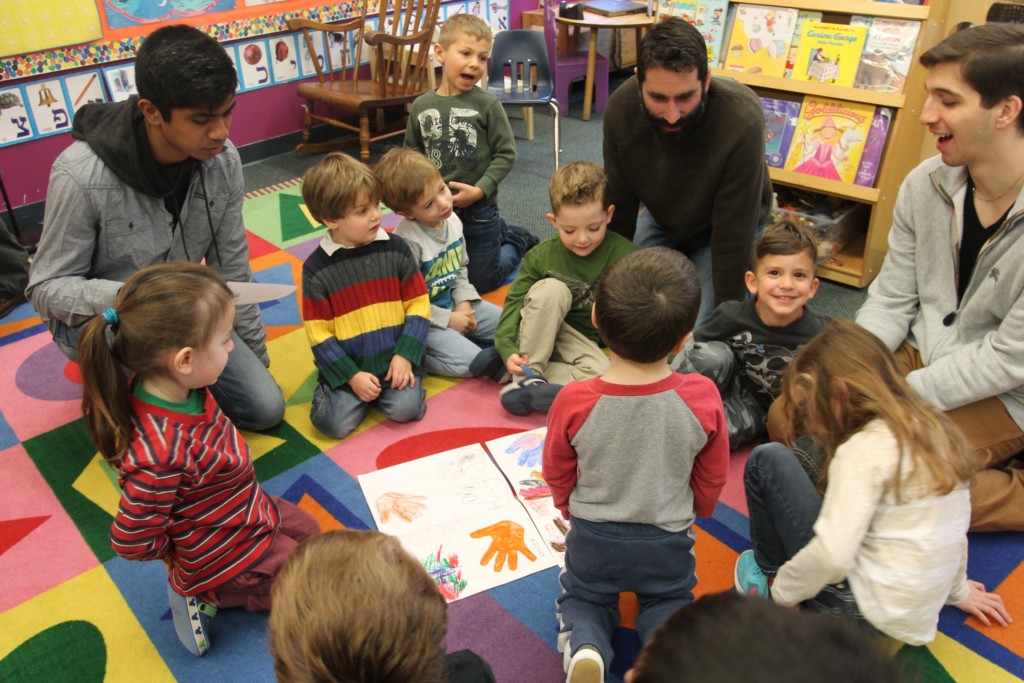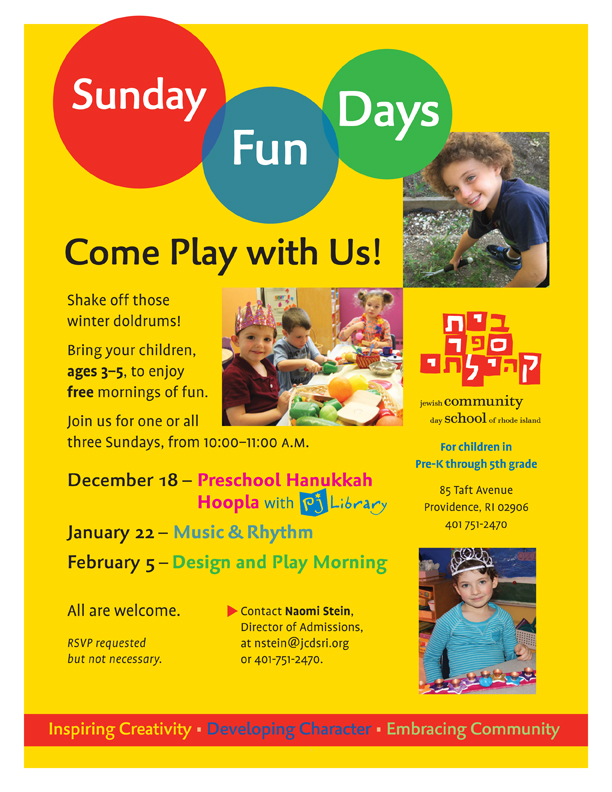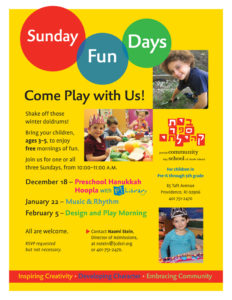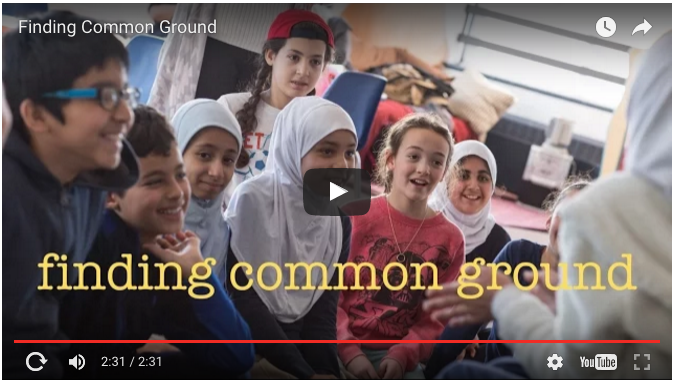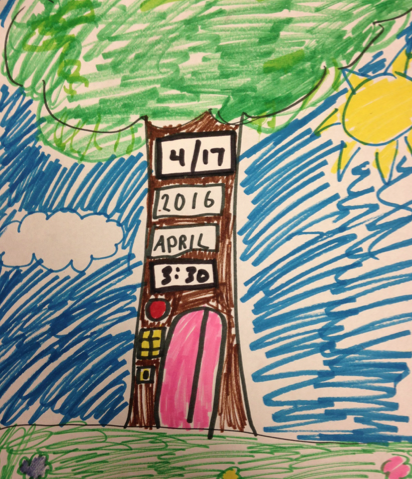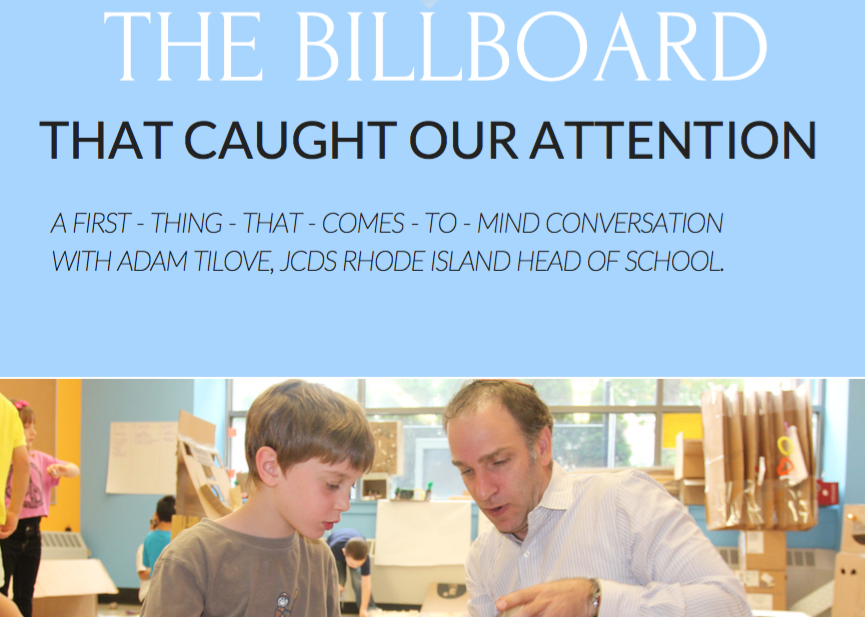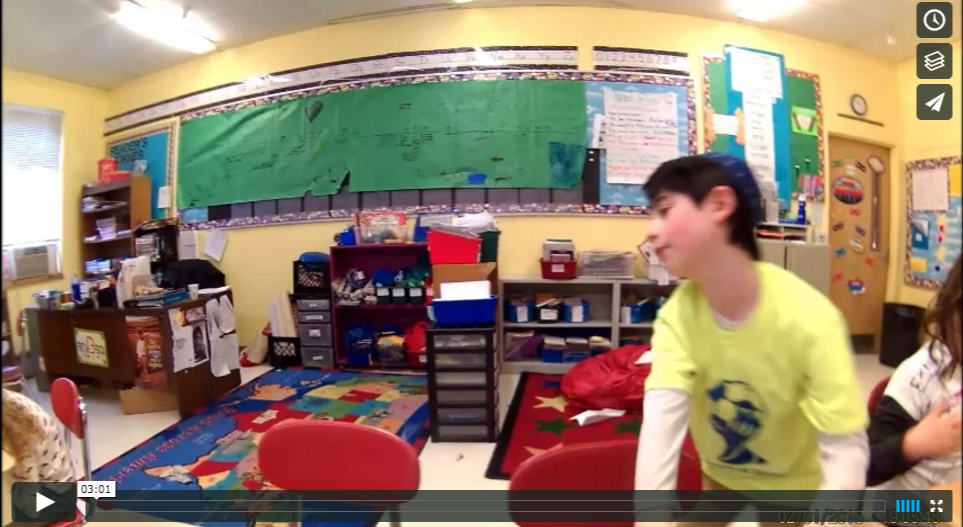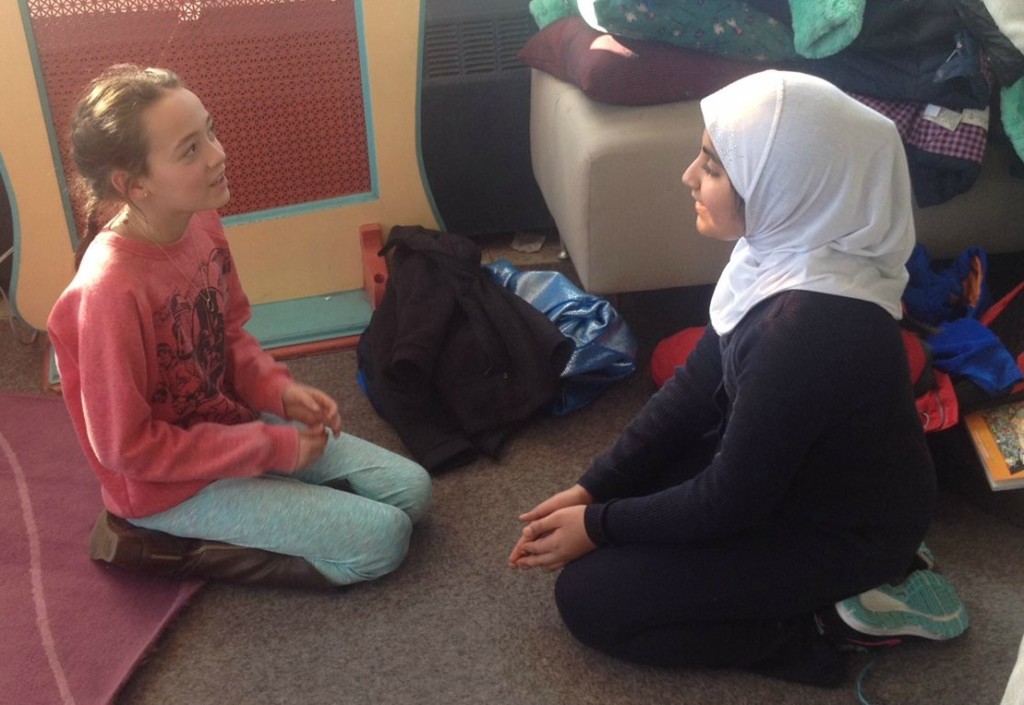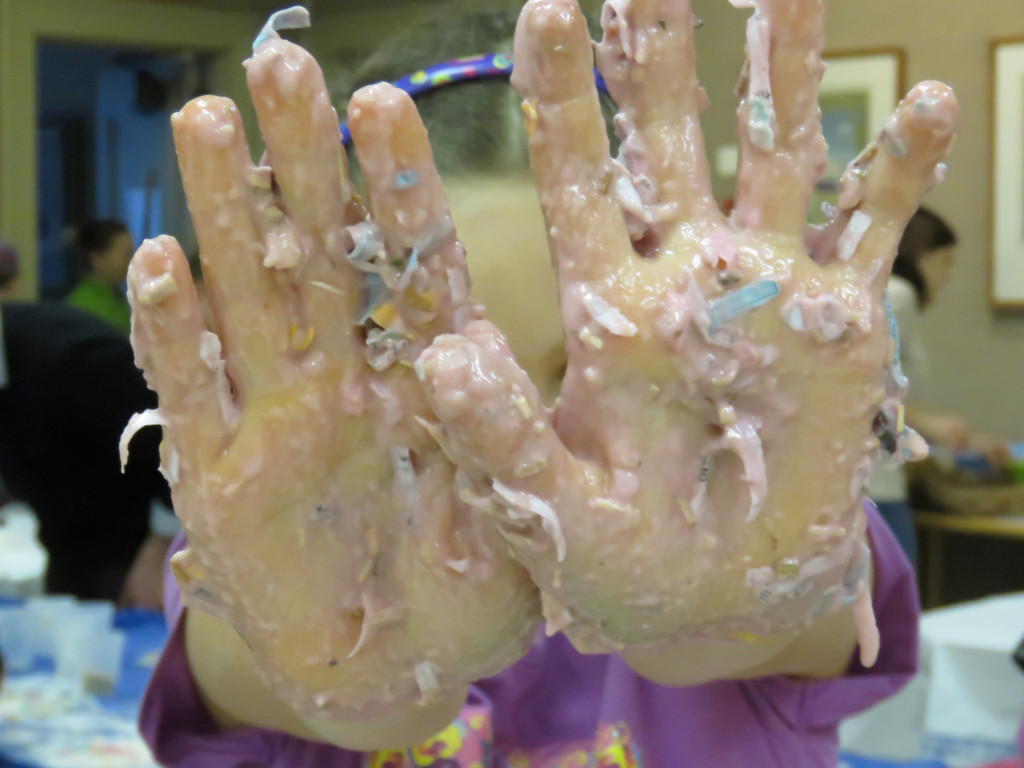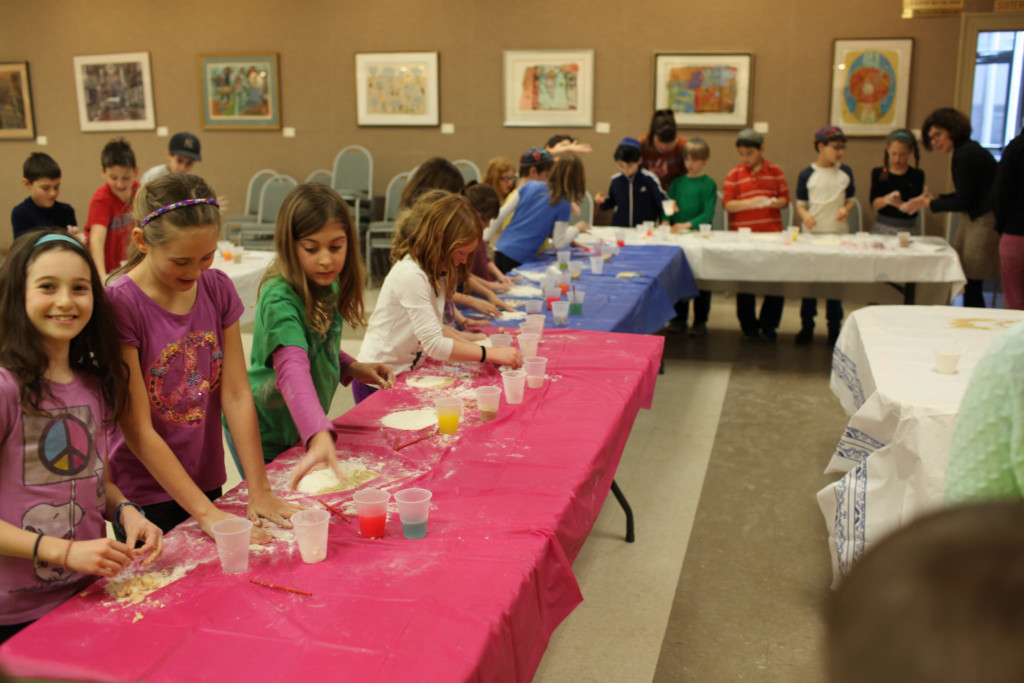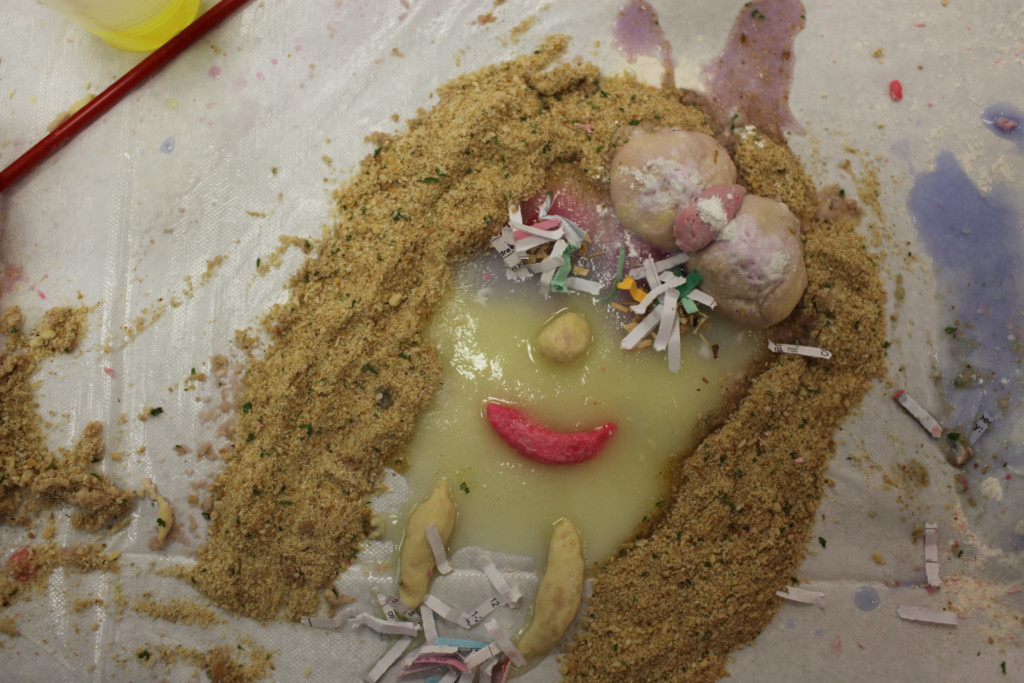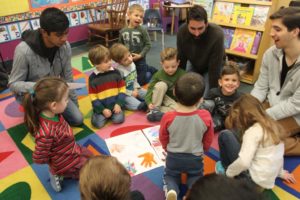 Ask a four-year-old what matters most about the classroom furniture that she helped design with local college students, and you get an insightful response.
Ask a four-year-old what matters most about the classroom furniture that she helped design with local college students, and you get an insightful response.
“That I can draw on it,” said Ellie, a pre-K student, who with her classmate, Ziva, sketched atop the shiny white surface of the new “hub” delivered to their classroom in the Jewish Community Day School (JCDS) of Rhode Island.
The pre-K children and their classmates designed the hub with a group of students 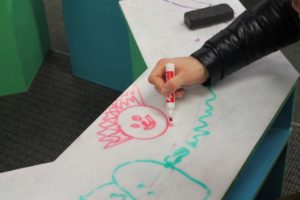 from an engineering class at Brown University.
from an engineering class at Brown University.
Their collaborative ideas, drawings and prototypes eventually became a new seven-sided, green-and-blue, multi-unit, shelved furniture hub that the Brown students built and delivered to the JCDS classroom.
About every week, students from Brown and from the Rhode Island School of Design visit JCDS to work with children on developing furniture, games, play huts and other objects of everyday design.
“An important goal of this partnership is to develop an innovative design curriculum for kids, combining design and Jewish values, while strengthening collaborations within our diverse community,” said Ian Gonsher, assistant professor of practice in Brown’s School of Engineering, and JCDS Board of Trustees member.
This partnership is “in part, about what Jews put into the world, and the creative process that makes that possible,” he said. “It is about how we are preparing the next generation to make their contribution.
Collaboration draws heavily on Gonsher’s design teachings at Brown.
“These combine cultivating individual creative practice, empathy and understanding for those we design for, and translating those ideas into prototypes, which give JCDS children the chance to share and iterate upon their ideas. Prototypes may be a physical model or a drawing, but a story or conversation, as well.”
In the hub project, for example, students from his engineering capstone design class visited pre-K youngsters to gather information (research), plan (designs on paper evolved into final designs made of cardboard), and then implement (the college students built and delivered the piece).
The Brown students returned to observe how its pre-K occupants used the furniture, gathering feedback on ways to improve the item. “This benefits both older students and younger students, in part, because working with people of different ages gives you different perspectives from which to understand your creative process,” Gonsher said.
At the feedback session, several children drew atop the hub, which is topped by a white polyethylene surface (the marks wash off with soap and water).
Ellie sketched a series of cobalt-blue-colored arches, which she called “a bridge.” Meanwhile, her classmate, Ziva, drew a forest-green-colored horizontal “balloon and string,” which stretched across each section of the hub.
Asked about the new furniture, four-year-old Micah replied, “I love the bright colors. And the places to put toys.”
For the Brown students, the project remained incomplete until they could deliver the piece and observe how the children used it, said Brown seniors Jeremy Joachim and Robert “Robbie” Petteruti Jr., who worked with three peers on the hub.
“We also wanted to learn what the students called the piece when it was placed in the classroom, and what rules and rituals developed with its use,” said Joachim.
The pre-K children were “very open to the Brown students, who were very open to the pre-K ideas,” said Laurie Noorparvar, Pre-K Lead GS Teacher.
“Our class loves to experiment and to brainstorm,” said Hillary Schulman, Pre-K and Kindergarten Assistant.
Over the last few months, another group of Gonsher’s students worked with pre-K children on drawings and cardboard prototypes for a play hut and for a “Quiet House.”
They also collaborated with the 3rd Grade class in JCDS’s Design Lab to build prototypes for a “Recharging Station.” 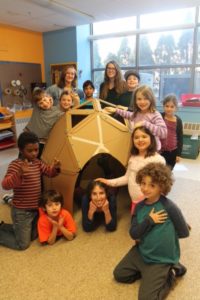 “Recharging” in this case refers to a place for the children to renew and refresh during the course of the school day.
“Recharging” in this case refers to a place for the children to renew and refresh during the course of the school day.
JCDS emphasizes “Design Thinking,” which it defines as a human-centered way to “look at needs, problems, and solutions by putting people and values first.” The Design Lab is “a space where students explore engineering concepts and translate their knowledge, empathy, and ideas into action.”
“It is strength for JCDS not to have a rigid structural curriculum,” said, Adam Tilove, Head of School. “So, we can say yes to exciting opportunities for our children to learn from Brown and RISD students. Partnership between our small school and Brown and RISD is an exciting educational endeavor.”
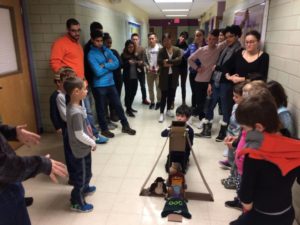 In another collaboration, 15-or-so college students from Gonsher’s Design Studio class, worked with first graders to design and build new games such as a “hallway catapult.” Sketches became cardboard prototypes improved through both play and work in the Design Lab. The first graders wrote game rules and then re-tested final prototypes with fifth-grade “buddies.”
In another collaboration, 15-or-so college students from Gonsher’s Design Studio class, worked with first graders to design and build new games such as a “hallway catapult.” Sketches became cardboard prototypes improved through both play and work in the Design Lab. The first graders wrote game rules and then re-tested final prototypes with fifth-grade “buddies.”
“Out of this unique, special collaborative relationship, between Brown, RISD and JCDS, a creative community is emerging, as well as interdisciplinary and inter-institutional ways to think about creative output,” said Gonsher.
“This kind of progressive education embraces creativity and design, empowering students and giving value and meaning to ideas.”
Gonsher hopes a larger dialogue about Jewish identity and creativity emerges from the partnership.
“It’s a conversation about how Jewish values and creativity align. It’s about how this generation, and this iteration of Jewish learning, might contribute to the very long tradition of Jewish education we have inherited.”
Using design as a guide to how the next generation will define its Jewish experience means that students from Brown and RISD will continue to visit JCDS. There, they will ask children, some as young as three, what is in their imagination, and how, together, they can turn those dreams into something real.
